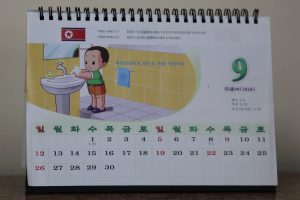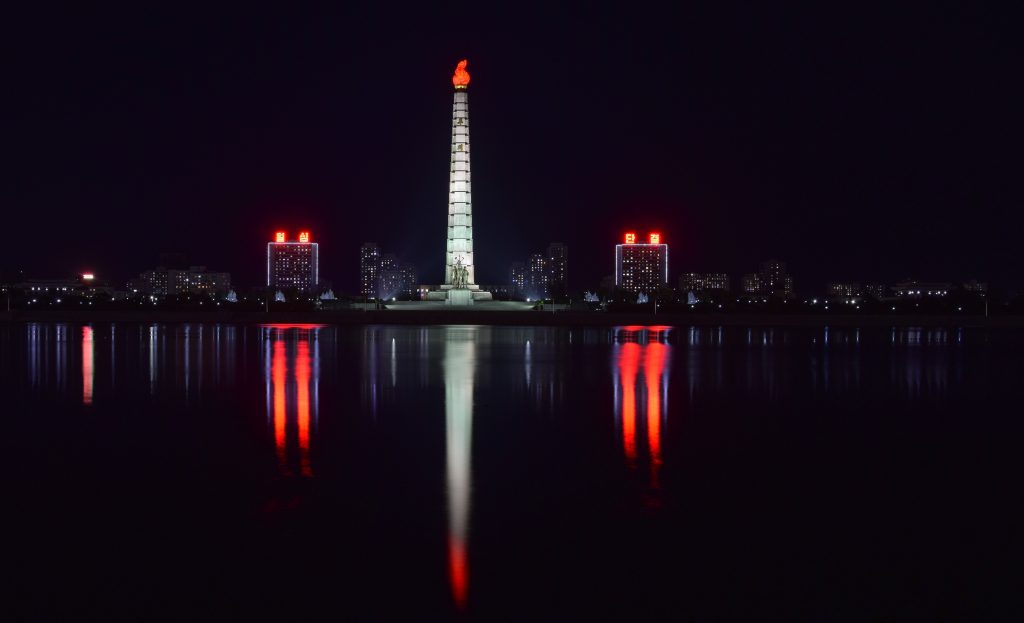What is the Juche Calendar? Is there such a thing as a Korean calendar? What year is it in North Korea? While most of the world uses the Gregorian calendar, based on the birth of Jesus Christ, there are actually a whole host of different calendars used across the globe. The Russians, for example, celebrate Christmas two weeks after the Western world. The Persians? They’re currently living in the year 1398. For Jews, it’s 5779, and the Chinese like to name their years after animals—this year happens to be the year of the pig.
But what about North Korea? What calendar do they follow in their highly isolated regime? The answer is the Juche Calendar—a unique system tied directly to the leadership of Kim Il Sung, the country’s founding leader. If you’re planning a trip to the North, you’re going to need to learn a little bit about how they measure time.
Birth of the Juche Calendar
You’ve probably heard of the Juche ideology, which was conceived by Kim Il Sung to shape the economic and political system of North Korea. The country has always been obsessed with centering itself around the figure of Kim Il Sung, and this extends to their approach to time itself. The Juche Calendar was born directly out of this philosophy and was introduced in 1997 to commemorate the third anniversary of Kim Il Sung’s death. But even before 1997, North Korea had already been informally following a system where the year was measured from the birth of Kim Il Sung.
The Juche Calendar officially started from the year 1912, marking the birth of the leader, which is why 1912 is known as Juche 1. So, to break it down: if you’re wondering what year it is in North Korea, you take the current year in the Gregorian Calendar (the one we all use around the world) and subtract 1911. Easy enough, right?
For example, the year 2019 becomes Juche 108. So, it’s not that hard to calculate, but it’s certainly a good conversation starter when you’re walking around Pyongyang and trying to wrap your head around how they perceive the passage of time.
When did the Juche Calendar begin?
You might be asking why 1912? Well, it’s the year Kim Il Sung was born—April 15th, 1912 to be precise. And what better way to celebrate the life of the founding father than to have the entire nation’s timeline start from his birth? This date now holds immense significance to North Koreans, with the Day of the Sun being celebrated every year on his birthday, in honor of his leadership and the Juche ideology he established.

When you think about it, the system is a clever piece of state propaganda. The Juche Calendar not only marks the years of Kim Il Sung’s life but also aligns with the idea that the regime’s history, identity, and future are all bound to the founder of the nation. Everything in North Korea begins with Kim Il Sung—his leadership marks the “official” start of the country, and the Juche era itself is a reminder of his central role in the country’s existence.
The Juche Calendar’s Role in North Korean Life
In 1997, when the Juche Calendar was officially adopted, it was accompanied by other shifts in how North Korea presented its ideology to the world. That same year, Kim Il Sung’s birthday was renamed the Day of the Sun and was made an even bigger national holiday. The Juche Calendar was now fully integrated into North Korean society, with every official document, press release, and even textbooks using the Juche date alongside the Gregorian year. It was clear—North Korea was staking its claim in time itself, showing that the past, present, and future were all built around Kim Il Sung’s legacy.
This is why, if you’re traveling to North Korea, you’re going to see things like Juche 100 printed on walls or in newspapers, referring to the year 2011 in the Gregorian Calendar. This date was celebrated with fanfare, as it marked the centenary of Kim Il Sung’s birth. It’s clear that for North Korea, the calendar isn’t just a way to track days—it’s a tool for reinforcing the ideology of Juche and solidifying Kim Il Sung’s place as the heart of the nation.
Converting Between the Juche and Gregorian Calendar
If you’re planning a trip to North Korea, you might find yourself needing to convert dates. But fear not, because it’s easier than you think. The conversion rule is simple: take the Gregorian year and subtract 1911. So, if it’s 2023, that would make it Juche 112. Pretty straightforward!
You don’t need to spend too much time fretting about the differences, but it’s worth understanding, especially when you’re dealing with dates on North Korean signage, books, and any other forms of media. It’s not just about changing the year—it’s a reminder of the unique way North Koreans see the world.

Why Has the Juche Calendar Been Discontinued?
As of late 2024 or early 2025, the Juche Calendar was officially discontinued by North Korean authorities, ending a chapter in the country’s timeline. There is little concrete information about why this decision was made, but it is widely speculated that the regime’s new direction under Kim Jong Un may be looking for ways to make the country appear more in line with international norms. By moving away from the Juche Calendar, the regime might be attempting to modernize and de-emphasize the intensely personal connection between the state and Kim Il Sung’s legacy.
However, as of now, no official statement has been released regarding the reasons behind the decision to discontinue the Juche Calendar, and this will likely remain one of the many mysteries of North Korean governance. Nonetheless, the change marks the end of an era, and it’ll be interesting to see how this affects North Korea’s national identity moving forward.
Final Thoughts: The End of an Era
The Juche Calendar has been a unique and integral part of North Korean identity for decades, symbolizing not just the leadership of Kim Il Sung but also the country’s desire for self-reliance and independence. It was more than a simple way to mark the passage of time—it was an ideological tool that reinforced the nation’s ties to its founding leader and the Juche philosophy. With the recent decision to discontinue the calendar, North Korea is marking a shift in its internal narrative. While the exact reasons behind this move remain unclear, it signals a new chapter in the country’s ongoing transformation under Kim Jong Un.
The Juche Calendar was a symbol of North Korea’s emphasis on its own history and the central role of its leadership. Its discontinuation raises questions about how the country might continue to shape its identity moving forward, and whether it signifies a shift toward more pragmatic or internationally accepted systems. Whatever the reason, the Juche Calendar will remain an important historical marker for those looking to understand North Korea’s unique worldview and its dedication to preserving the legacy of Kim Il Sung.
As the country transitions away from this system, it’s clear that time, much like the nation itself, remains an evolving concept in North Korea—always tied to its leaders, but now open to new interpretations.
Be a Juche boy (or girl) living in a Juche world on one of our North Korea tours!





